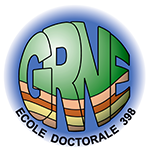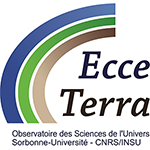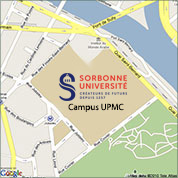Séminaire ISTeP - Mickael Nirrengarten
(Université de Cergy)
Integration of hyper-extended rift deformation in the southern North Atlantic plate reconstruction
Plate modeling aims to perform palinspatic fits of the continental blocks and to restore their motion through time using geophysical data such as oceanic magnetic anomalies. This method therefore supposes a continuous motion between the full fit position and the position determined by the first oceanic magnetic anomaly. However, this stage corresponds to the rifting. Indeed, hyper-extended rifted margins are wide domains (sometimes over 100km wide) resulting from complex deformation processes which last over long period. Therefore, we propose to investigate a restoration methodology which permits to integrate the spatio-temporal rift evolution in a plate modelling. Our natural laboratory are the southern North Atlantic magma poor rifted margins which present an extensive dataset including deep ODP boreholes which enable good spatio-temporal calibrations.
Spatial, temporal and motion constraints are the prerequisites to perform plate modeling. Spatial constraints over all this system result from the mapping of rift domains determined by seismic interpretation and gravity inversion. The pre-deformation continental blocks are determined using domain mapping, crustal thickness resulting from gravity inversion and a constant initial thickness. The formation age of each rift domain can be determined by stratigraphic correlation or geochronologic data. However, this information is limited to drilled area or onshore exposed rift systems, therefore strong time constraints are limited to the Iberia-Newfoundland and Pyrenean systems. Transfer fault in newly created surfaces are the best motion markers.
16/02/2017, Salle Fourcade à 12h30
Chiffres clés (Mars 2025)
L'ISTeP comprend 131 membres dont :
Permanents (66)
- Professeurs : 17 (+2 PAST)
- Maîtres de conférence : 26
- Directeurs de recherche CNRS : 1
- Chargés de recherche CNRS : 1
- ITA : 19
Personnels non permanents (65)
- Collaborateurs bénévoles / émérites : 17
- Chaire de professeur junior : 1
- Enseignants-chercheurs contractuel : 2
- 1 MCF accueil en délégation
- ATER et Post-Docs : 9
- Doctorants : 32
- ITA-BIATSS : 3





